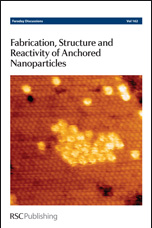The reaction mechanism for CO oxidation by isolated Rh atoms stabilized on CeO2(111), CeO2(110) and CeO2(100) surfaces is investigated by a combination of Density Functional Theory and kinetic Monte Carlo calculations. On Rh/CeO2(111), one adsorbed CO molecule on Rh was found to form a stable intermediate structure with surface O. The reaction cycle cannot be closed because of the strong adsorption of the CO2 complex. The presence of a second adsorbed CO significantly decreases the desorption energy, thus opening a possible reaction path. Formation of the oxygen vacancy is accompanied by reduction of surface cerium. On Rh/CeO2(110), adsorbed CO can easily react with a ceria surface O atom due to the lower Ce–O bond energy. Since surface O atom migration is much more facile on Rh/CeO2(110) than on Rh/CeO2(111), CO2 desorption is also more easy for the former surface. Molecular oxygen will adsorb on the resulting vacancy. After desorption of the second CO2 product molecule by reaction of adsorbed CO with another surface O atom, the adsorbed oxygen molecule migrates spontaneously to the vacancy site and dissociates with negligible barrier. The role of molecular oxygen is to heal the oxygen vacancy rather than being involved in a direct reaction with adsorbed CO. The Rh/CeO2(100) model was found to be inactive for CO oxidation, mainly because of the geometric constraints for the adsorbed CO molecule to react with one of the surface O atoms, despite the low Ce–O bond energy of the CeO2(100) surface. The main reason is the large distance between the C of adsorbed CO and the ceria O surface atoms. The particularities of the CO oxidation mechanism for isolated Rh atoms on these ceria surfaces are in agreement with the experimental activity trends.
You have access to this article
 Please wait while we load your content...
Something went wrong. Try again?
Please wait while we load your content...
Something went wrong. Try again?

 Please wait while we load your content...
Please wait while we load your content...